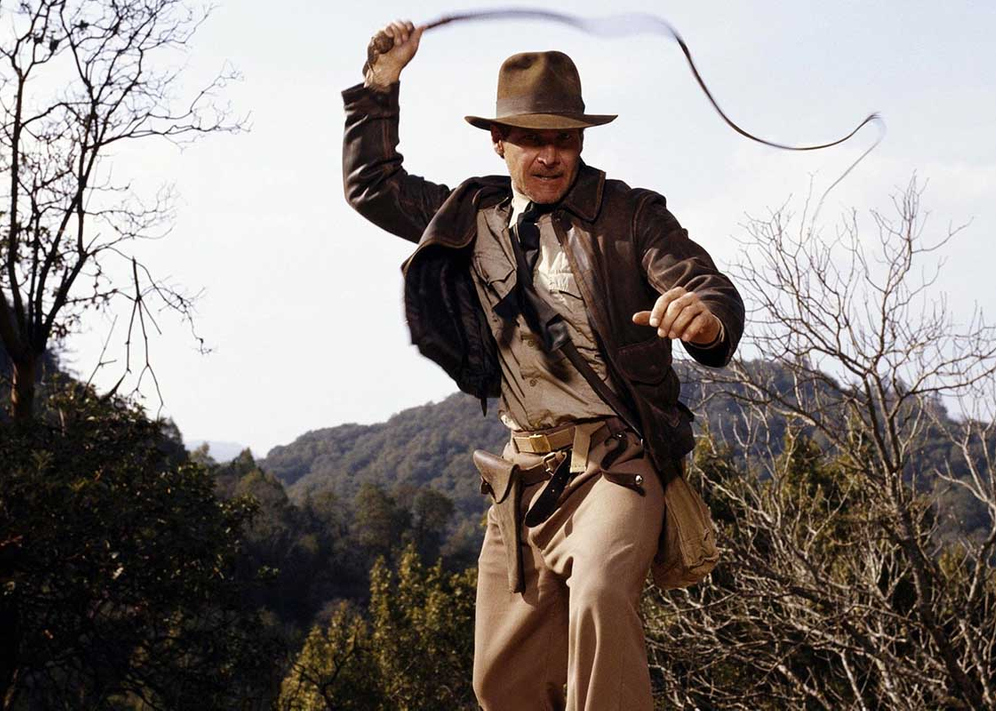We’re often asked about angler’s casting issues, so I thought I’d outlne the most common errors with casting a fly line, the cause of the issue and how to remedy the situation.
The Line Cracks like a Whip
If you find yourself sounding like Indiana Jones on occasion, it’s because you’re effectively doing exactly what he does, but with the fly line.
The crack sound is the result of the end of the line changing direction at high speed – just like a whip.
The key to resolving this is patience. You need let the line straighten out before you start the next part of your cast. Obviously, don’t wait too long or you’ll catch the ground behind or the water in front of you, but leave it a little longer than you have been doing for it to straighten before changing direction.
This issue may result in a fly being broken off if you don’t correct the problem. At the very least it will weaken the leader at the fly and risk line breakage when a fish takes.

Does your casting give Indiana Jones a run for his money ?
Difficulty In Picking Up The Line When Starting a Cast
If you’re using intermediate or sinking lines like di3 or di7, they’re likely to be underwater when you try to turn them over. This is going to cretae some heavy resistance from the water, including the added stress of water tension.
Dragging a line through the water with great gusto is likely to cause a lot of disturbance in the water and spook any fish which may be lurking around, as well as exhausting any poor angler who keeps trying to do this.
So what’s the answer ? The way to do it, is to use less force, not more, when using heavy lines or flies. Make a gentle roll cast to clear everything out of the water before starting
the next cast. This puts the line on top of the water and it will lift off more easily and cause far less water disturbance.
It’s good practice to incorporate a roll cast into the start of every cast, whatever line you use, as this makes things easier by straightening the line and leader, hugely reducing tangles and becoming a muscle memory.

Photo Credit : @brooksrice
The Line Hits Itself As It Passes In Mid-air
The reason the line crashes into itself is that the forward and back casts are in the same
plane. i.e. They get in each other’s way.
A slight twist of your forearm during the cast on the backcast will translate to a rotation movement at the rod tip of a foot or so. The effect of this rotation of the rod on the different strokes of the cast is to move the line going back further away from your body than the line coming forward. This movement then seperates the two parts of the line, stopping them clashing.

Photo Credit :, @glen_rushton
Knots in My Leader
These knots are called wind knots and it is important that you check for them after each cast, as they can weaken the line leading to lost fish.
It doesn’t matter how good you are at casting, you will always get the odd knot in your line and droppers, as they are waving around during each cast, so it is inevitable that they will get in a birds nest occasionally.
If this happens regularly, the cause is likely to be similar to the main fly line hitting itself, but this time with the leader. As with the previous tip, slightly twist your forearm during the backcast to seperate both the fly line and the leader from themselves.

Photo Credit : @vidarnm
How Do I Cast In To The Wind ?
On occasion, we find ourselves in a position where the only way we can fish is directly in to the wind. This might be due to only being able to fish one bank or maybe we’ve spotted a rising fish behind us on a boat and want to cover it.
The best way to achieve a reasonable cast in these circumstances is to effectively cast backwards. Now that sounds a little silly, but by twisting your body so that the cast is in the opposite direction to where you want to be and using the final backcast as effectively a forward cast, you can punch the line directly in to the face of the wind.
Obviously, this is going to be hard work and the flies may not land quite as nicely as you’d like, due to wind resistance. This is particularly the case if you’re using very light flies, but at least you’re getting further than you would have done casting forwards.
As ever, please ensure you wear eye protection at all times when fly fishing, especially casting in to the wind, as a sudden gust can easily change the direction of your line and whip a fly across your body or worse, your face.
